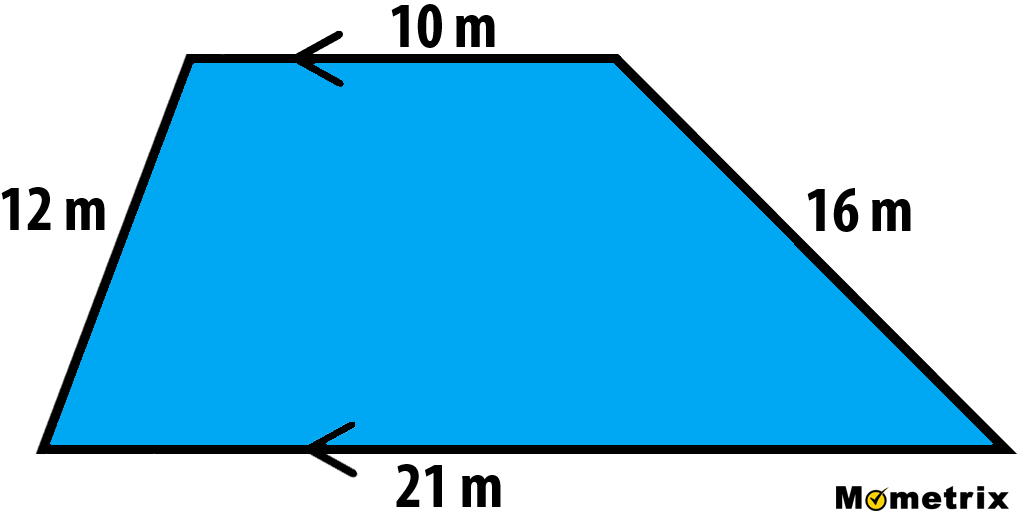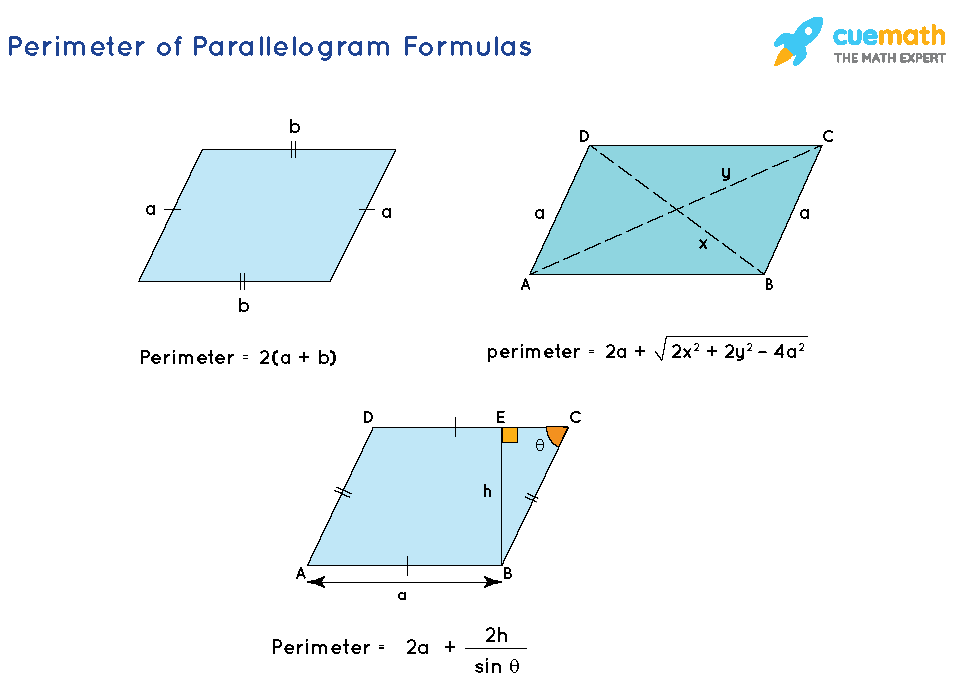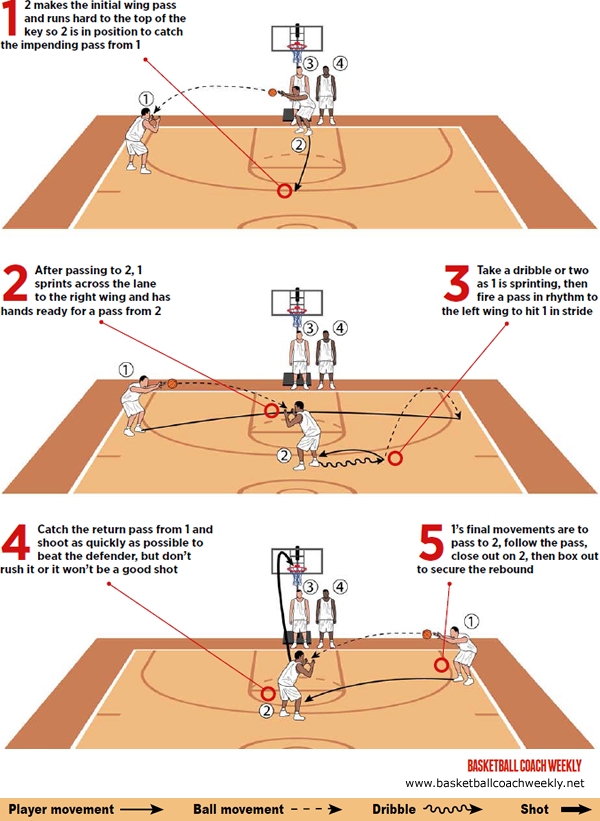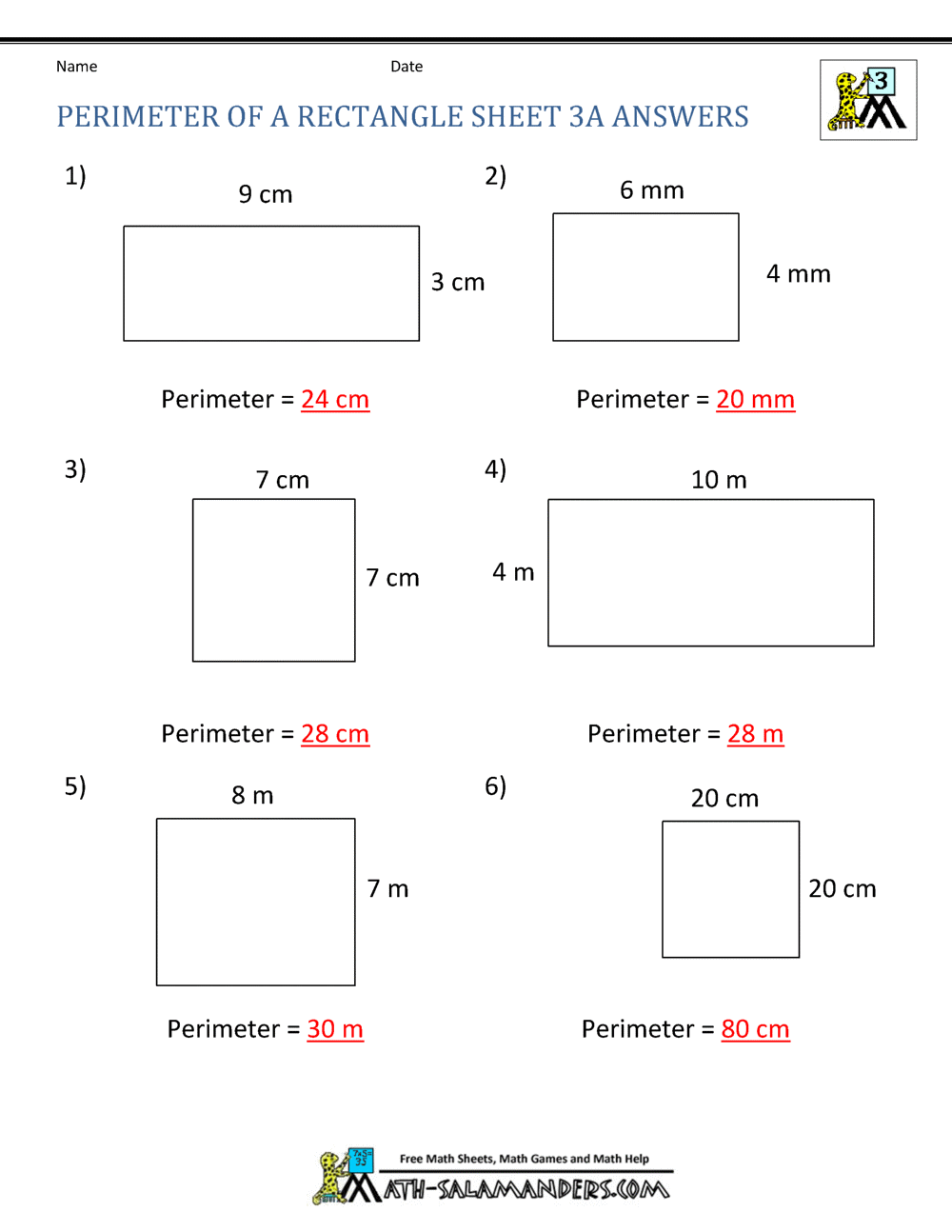Topic how do you find the perimeter of a trapezoid: Discover the intriguing world of geometry as we explore how to effortlessly find the perimeter of a trapezoid, a fundamental yet fascinating aspect of mathematical learning and practical application.
Table of Content
- Understanding the Basics of a Trapezoid
- YOUTUBE: Finding Area and Perimeter of a Trapezoid
- Formula for Calculating the Perimeter of a Trapezoid
- Step-by-Step Guide to Find the Perimeter
- Examples of Perimeter Calculations
- Special Cases: Isosceles and Right Trapezoids
- Calculating Perimeter with Missing Side Information
- Practical Applications and Problem-Solving Tips
- Advanced Tools and Calculators for Perimeter Calculation
- Frequently Asked Questions About Trapezoid Perimeter
- Additional Resources and Learning Materials
Understanding the Basics of a Trapezoid
A trapezoid, also known as a trapezium in some countries, is a four-sided geometric figure known for its unique pair of parallel sides, referred to as the bases. The other two sides, which are not parallel, are called the legs of the trapezoid. This distinct structure forms the basis of its geometric properties and calculations.
- Definition: A trapezoid is a quadrilateral with at least one pair of parallel sides.
- Bases and Legs: The parallel sides are known as the bases, while the non-parallel sides are the legs.
- Special Types: A trapezoid can be regular (isosceles) where the non-parallel sides (legs) are equal in length, or irregular with differing leg lengths.
- Angles: The angles in a trapezoid can vary widely, with isosceles trapezoids having equal angles at each base.
- Area and Perimeter: The area and perimeter calculations of a trapezoid are based on the length of its sides, and in the case of its area, the height (distance between the parallel sides) plays a crucial role.
Understanding these basic characteristics of a trapezoid is essential before delving into the specific methods of calculating its perimeter, which involves summing the lengths of all its sides.

READ MORE:
Finding Area and Perimeter of a Trapezoid
\"Discover the secret to calculating perimeter effortlessly and master this essential math concept in just a few minutes! Our video breaks down perimeter into simple steps, making it fun and easy to understand. Say goodbye to confusion and hello to math success!\"
Formula for Calculating the Perimeter of a Trapezoid
The perimeter of a trapezoid is the total length around its boundary. To calculate it, one must know the lengths of all four sides of the trapezoid. The formula to find the perimeter is simple and straightforward:
Perimeter = sum of all side lengths
Mathematically, it is expressed as:
P = a + b + c + d
- a, b: Lengths of the parallel sides (bases).
- c, d: Lengths of the non-parallel sides (legs).
This formula applies to all types of trapezoids, whether they are isosceles, right-angled, or with non-equal sides. It\"s important to note that accurate measurement of each side is crucial for correct perimeter calculation.
For an isosceles trapezoid, where the legs are equal, the formula simplifies slightly as the lengths of the two non-parallel sides are the same.
It\"s also worth mentioning that in some cases, when you do not have the measurements of all sides, you might need to use additional geometric principles or formulas to find the missing lengths before applying the perimeter formula.

Trapezoid Area and Perimeter
\"Uncover the fascinating world of trapezoids in this mind-blowing video! Get ready to explore their unique properties and learn how to find the area with a few simple tricks. No more struggling with trapezoids - become a pro in no time!\"
Trapezoid Area | MathHelp.com
\"Unlock the mysteries of area calculations in this amazing video! Whether you\'re dealing with squares, rectangles, or circles, our step-by-step guide simplifies the process and makes it enjoyable to learn. Prepare to amaze your friends with your newfound area expertise!\"
Step-by-Step Guide to Find the Perimeter
Finding the perimeter of a trapezoid involves a straightforward process that can be accomplished by following these steps:
- Identify the Sides: Recognize the four sides of the trapezoid. These include two parallel sides, known as bases, and two non-parallel sides, often referred to as legs.
- Measure the Sides: Accurately measure the length of each side of the trapezoid. This is crucial as the perimeter is the sum of these lengths.
- Apply the Formula: Use the perimeter formula, which is the sum of the lengths of all sides. Mathematically, it is expressed as P = a + b + c + d, where \"a\" and \"b\" are the bases, and \"c\" and \"d\" are the legs.
- Calculate the Perimeter: Add the lengths of all four sides. For example, if the sides of the trapezoid are 10, 6, 8, and 9 meters, then the perimeter would be 10 + 6 + 8 + 9 = 33 meters.
- Consider Special Cases: In cases where not all sides are known, you may need to use geometric principles or other given information to find the missing lengths. For example, if you know the perimeter and three sides, you can rearrange the formula to find the fourth side.
These steps should be sufficient to find the perimeter of any trapezoid, whether it is scalene, isosceles, or a right trapezoid.

Examples of Perimeter Calculations
Understanding how to calculate the perimeter of a trapezoid is easier with examples. Here are a few to help grasp the concept:
- Example 1: For a trapezoid with sides measuring 10 meters, 6 meters, 8 meters, and 9 meters.
- Solution: The perimeter is calculated as the sum of all its sides, which is (10 + 6 + 8 + 9) meters, equaling 33 meters.
- Example 2: A trapezoid where the sum of lengths of non-parallel sides is 12 units, and the sum of the parallel sides is 8 units.
- Solution: The perimeter is the total of these sums, which is 12 units + 8 units = 20 units.
- Example 3: A complex case where we have a trapezoid ABCD with AB = 120 m, DE = 50 m, EF = 120 m, FC = 80 m, BF = 90 m.
- Solution:
- First, calculate the missing sides AD and BC using the Pythagoras theorem.
- For side BC, in triangle BFC (right-angled), use BC² = BF² + FC². With BF = 90 m and FC = 80 m, BC is found to be approximately 120.41 m.
- For side AD, in the right-angled triangle ADE with AE = 90 m and DE = 50 m, AD is calculated to be around 102.9 m.
- Finally, the perimeter of trapezoid ABCD is the sum of all sides: 120 m + 120.41 m + 250 m + 102.9 m ≈ 593.31 m.
These examples illustrate the basic principle of trapezoid perimeter calculation: summing the lengths of all four sides. This method is applicable regardless of the trapezoid\"s specific shape or the lengths of its sides.

Special Cases: Isosceles and Right Trapezoids
When calculating the perimeter of trapezoids, isosceles and right trapezoids present unique considerations due to their special properties.
Isosceles Trapezoid
An isosceles trapezoid is characterized by non-parallel sides that are of equal length. The formula for its perimeter is given by:
P = a + b + 2c
Where a and b are the lengths of the parallel sides and c is the length of one of the non-parallel sides.
- Example: For an isosceles trapezoid with bases of 10 cm and 15 cm and non-parallel sides of 8 cm, the perimeter would be calculated as 10 + 15 + 2(8) = 41 cm.
Right Trapezoid
A right trapezoid has one pair of non-parallel sides that meet at a right angle. The formula for the perimeter of a right trapezoid is:
P = B + b + S + h
Here, B and b are the lengths of the parallel sides, S is the length of the oblique side, and h is the height of the trapezoid.
If one of the sides is unknown, it can be calculated using the Pythagorean theorem.
- Example: For a right trapezoid with bases of 12 cm and 7 cm, height of 5 cm, and the oblique side calculated as √(5² + (12 - 7)²) = √(25 + 25) = √50 cm, the perimeter would be 12 + 7 + √50 + 5 cm.
These examples demonstrate the specific approaches needed to calculate the perimeter of isosceles and right trapezoids, taking into account their unique properties.

_HOOK_
Calculating Perimeter with Missing Side Information
Calculating the perimeter of a trapezoid when some side lengths are missing involves using the properties of trapezoids and often requires applying geometric theorems or formulas. For instance, if the trapezoid includes right angles or isosceles triangles, you can use the Pythagorean theorem or properties of isosceles triangles to find the missing lengths. Once all side lengths are determined, the perimeter is the sum of these lengths.
- Identify the known side lengths and angles of the trapezoid.
- If the trapezoid has right angles or isosceles triangles, use relevant geometric principles (like the Pythagorean theorem) to find the missing lengths.
- Add up the lengths of all four sides to find the perimeter.
For example, if a trapezoid has one missing side but includes a right triangle, you can use the other two sides of the triangle to calculate the missing length using the Pythagorean theorem. If the trapezoid is isosceles, and you know the length of one of the non-parallel sides, the other non-parallel side is the same length.

Practical Applications and Problem-Solving Tips
Understanding how to find the perimeter of a trapezoid is not just a theoretical exercise; it has practical applications in various fields like architecture, engineering, and even in everyday problem solving. Here are some tips and applications:
- Real-World Applications: In architecture and engineering, calculating the perimeter of trapezoidal shapes is crucial for material estimation, spatial planning, and structural design. For example, landscapers may use these calculations for garden layouts, and carpenters for roofing.
- Problem-Solving Strategies: When solving problems involving trapezoids, always start by identifying known and unknown side lengths. Use geometric properties and theorems, like the Pythagorean theorem, to find missing lengths in right-angled triangles within the trapezoid.
- Understanding the Trapezoid: A trapezoid is a four-sided shape with one pair of parallel sides. Recognize which sides are parallel and which are non-parallel as this is crucial in perimeter calculations.
- Using the Perimeter Formula: The perimeter of a trapezoid is the sum of all its four sides. If you know the lengths of all sides, simply add them together.
- Calculating with Missing Sides: If a side is missing, use other given dimensions and apply geometric principles to find it. For instance, if you know the perimeter and three sides, subtract the known sides from the total perimeter to find the missing side.
- Isosceles Trapezoids: If the trapezoid is isosceles (non-parallel sides are equal), knowing the length of one non-parallel side gives you the length of the other.
Remember, practice and real-world application help in understanding these concepts better. Always visualize the shape and mark known dimensions to make problem-solving easier.

Advanced Tools and Calculators for Perimeter Calculation
Calculating the perimeter of a trapezoid can be made simpler and more accurate with the use of advanced tools and calculators. These tools are designed to handle various scenarios, including trapezoids with unknown side lengths or angles. Here’s how you can use these tools effectively:
- Online Calculators: Websites like Omni Calculator and Symbolab offer specialized trapezoid calculators. These calculators allow you to input known dimensions (sides, angles, heights) and automatically compute the perimeter.
- Step-by-Step Solutions: Some calculators provide step-by-step solutions, which are particularly useful for educational purposes or in-depth understanding of the calculation process.
- Versatile Input Options: Advanced calculators can handle a variety of input combinations, such as two sides and an angle, or the bases, a side, and the related angle. This flexibility is useful in scenarios where not all side lengths are known.
- Calculating Missing Dimensions: If some dimensions are missing, these tools can often calculate these using trigonometric functions and the Pythagorean theorem. For example, if you know the angle and one side, the calculator can determine the height, which can then be used to find missing side lengths.
- Special Cases: Calculators also cater to special trapezoid cases like isosceles and right trapezoids, where certain assumptions can be made about side lengths and angles, simplifying the calculation.
Such tools not only save time but also enhance accuracy, making them indispensable for students, educators, and professionals alike.

Frequently Asked Questions About Trapezoid Perimeter
- What is the formula for the perimeter of a trapezoid?
- The formula to calculate the perimeter of a trapezoid is: P = a + b + c + d, where P represents the perimeter, and a, b, c, and d are the lengths of the trapezoid\"s sides. In this formula, a and b are the lengths of the parallel bases, while c and d are the lengths of the non-parallel sides, also known as the legs of the trapezoid.
- How can I calculate the perimeter if I know the bases and leg lengths?
- To find the perimeter when you know the lengths of the bases and legs, simply add these lengths together using the perimeter formula.
- Is it possible to calculate the perimeter with missing side information?
- Yes, it\"s possible to calculate the perimeter with some missing side information. For example, if you know the lengths of the bases and one leg, you can use geometric properties or trigonometry to find the length of the missing leg, especially if the trapezoid has special properties like being isosceles or right-angled.
- Can I find the perimeter of a trapezoid using its height and angles?
- Finding the perimeter using just the height and angles of a trapezoid is more complex and typically requires more information. Knowing the height and angles, you can sometimes calculate the lengths of the sides, which can then be used to find the perimeter.
- What are some online tools for calculating trapezoid perimeter?
- Online calculators like Omni Calculator offer specialized tools for calculating the perimeter of a trapezoid. These calculators can handle various inputs such as sides, angles, or heights and provide the perimeter as output. They are especially useful for more complex trapezoid shapes.

READ MORE:
Additional Resources and Learning Materials
For those looking to expand their understanding and skills in calculating the perimeter of trapezoids, a variety of resources are available. These materials range from basic explanations to interactive tools and advanced applications.
- Interactive Calculators and Tools:
- Websites like Math is Fun and BYJUS offer interactive calculators and tools for calculating the perimeter of trapezoids, allowing users to input different side lengths and instantly see the results. These tools are particularly useful for visual learners and those who prefer hands-on learning.
- Comprehensive Guides and Formulas:
- Resources such as Cuemath and Math Open Reference provide detailed guides on calculating the perimeter of a trapezoid, including step-by-step instructions and various formulas. These are ideal for individuals who prefer a more structured learning approach.
- Example Problems and Solutions:
- For practice and deeper understanding, websites like BYJUS offer a range of example problems with solutions. These examples cover different types of trapezoids, including isosceles and right trapezoids, and scenarios with missing side information.
- FAQs and Theoretical Explanations:
- Many of these resources also include FAQs and theoretical explanations about trapezoids, helping learners to understand not just the \"how\" but also the \"why\" behind the calculations.
- Educational Videos:
- Online platforms such as YouTube have numerous educational videos that visually explain how to find the perimeter of trapezoids. These videos are suitable for those who learn best through audio-visual means.
- Advanced Topics:
- For those interested in more advanced topics, resources delve into the geometrical properties of trapezoids in coordinate geometry, exploring concepts like midsegments, medians, and more.
Additionally, many of these websites offer interactive quizzes and exercises to test understanding, making the learning process both engaging and effective.
Remember, mastering the calculation of a trapezoid\"s perimeter, like any mathematical concept, requires practice and patience. Utilizing these diverse resources can significantly aid in this learning journey.
Discovering the perimeter of a trapezoid is a fascinating journey into geometry. With the right tools, formulas, and examples, anyone can master this skill. Dive into our comprehensive guide to transform your mathematical understanding and become a trapezoid expert!

_HOOK_













